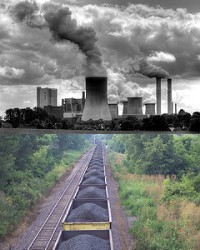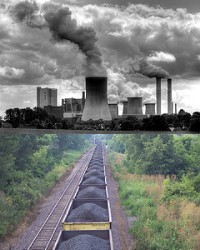 From a study published in this week’s Science Express ($ub Req’d):
From a study published in this week’s Science Express ($ub Req’d):
Bioelectricity produces an average 81% more transportation kilometers and 108% more emissions offsets per unit area cropland than cellulosic ethanol…
Secure · Tax deductible · Takes 45 SecondsSecure · Tax deductible · Takes 45 SecondsGiven the limited area of land that is available to grow biofuels crops without causing direct or indirect land use impacts, bioenergy applications should maximize the efficiency with which a given land area is used to meet transportation and climate change goals.
Bioelectricity is the act of making electric power by burning biomass for boilers or turbines instead of fossil fuels like coal.
In a nutshell the study says that an electric car using electricity generated by burning biomass will get 81% more miles per acre than a car using cellulosic ethanol. That is equivalent to improving the purported American average of 24 mpg to 44 mpg, which coincidentally is also the improvement achieved by the Prius and Insight.
I touched on this subject in an article titled Misplaced Priorities over in Grist last year. Imagine replacing the coal in the above photo with corn or wood or hay. Something has to give.
Corn ethanol was also part of the study and as you might have guessed, faired much worse than cellulosic. Not studied by this paper are environmental impacts and costs:
Specifically, the competitiveness of biomass ethanol depends on the cost of petroleum, whereas the competitiveness of biomass electricity depends on the cost of coal, wind, hydro, solar, and nuclear.
Which of the above energy sources will be increasing in cost and which will be decreasing?
The study looked at pure internal combustion cars and pure battery powered electric cars. It did not look at plug-in hybrids, which would eliminate range constraints imposed by today’s battery technology.
The paper also said:
Two leading technology developments, cellulosic ethanol and electric vehicle batteries, provide alternative pathways for bioenergy-based transportation. Biomass can be converted into ethanol to power internal combustion vehicles (ICVs) or converted into electricity to power battery electric vehicles (BEVs). It is uncertain which pathway could reach technical and economic maturity first. The cellulosic ethanol pathway benefits from commercially available flex-fuel vehicles but requires significant investments in infrastructure as well as technology advancements to reduce costs for energy conversion. The bioelectricity pathway shows promise in existing distribution infrastructure and emerging commercial offerings of battery electric vehicles that meet technology challenges of range, cost, and charging time. Electricity produced from biomass is a near-term renewable energy source that can be implemented with biomass boilers, Integrated Gasification Combined Cycle (IGCC) power plants, or co-combustion with coal.
What we have here is a battle forming up between increasingly electrified transport (hybrid–plug-in-hybrid–fully electric) and corn ethanol powered internal combustion engines (cellulosic is and will probably always be just five years from economic viability). One side is championed by consumer demand being met by market forces and the other side is championed by our politicians who force us to pay to turn our own food into fuel and then pour it down our throats. These are the same politicians who subsidize oil with one hand and its competitor, biofuels with the other. If it hasn’t dawned on you yet that our politicians are not capable of solving complex problems like this, maybe it’s time it did. Take matters into your own hands. Make your next car purchase a hybrid, plug-in hybrid, or full electric when they arrive (on dealer lots next year).
The Renewable Fuels Association and the National Biodiesel Board are going to have their hands full debunking all of this peer-reviewed rubbish being published in rags like Science (see here and here).
You can listen to a Science podcast here.




